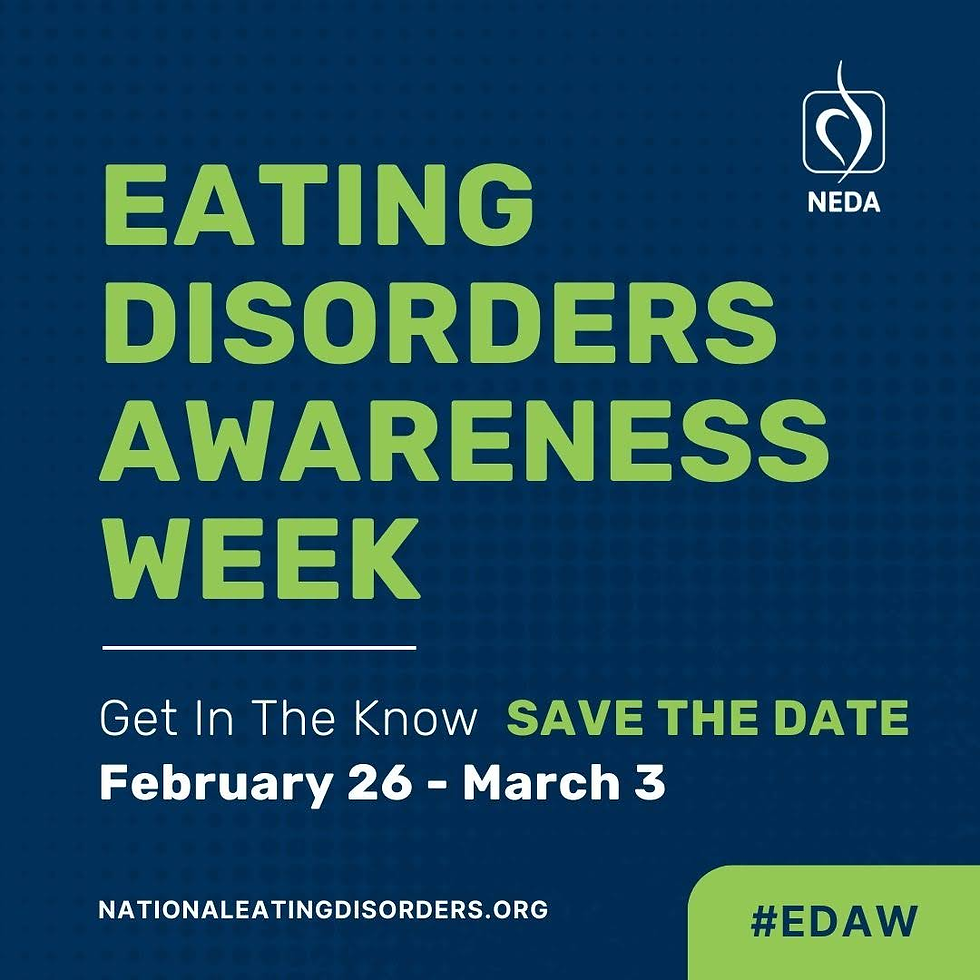Understanding and Addressing Eating Disorders in Children, Adolescents, and University Students
- Renuka Barlingay
- Jan 15, 2024
- 2 min read

Eating Disorders Among the Young
Eating disorders (EDs) are a growing concern in our society, affecting not just adults but also children and adolescents. Surprisingly, these disorders are not confined to a particular age group. Research has shown that kids as young as 7 years old can start showing signs of eating disorders. This highlights how important it is to detect these problems early and start helping right away.
Recognizing the Early Signs of ED
Some key indicators of EDs in children and adolescents include aversion to certain tastes or textures, tantrums, reduced food intake, concerns about body image, unexplained weight loss, hair thinning, delayed puberty, digestive issues, and mood swings.
Prevalence of ED in the young
About 30% of students in Indian universities are dealing with eating problems. Up to 81% of adolescents have body image concerns indicating a rise in body dissatisfaction. Especially for younger girls, between 13 and 17 years old, around 26.67% are facing these eating challenges. Even more worrying, is the average age of kids struggling with eating disorders is 11 years, and these are often accompanied by other mental health problems too. The most common one is anorexia nervosa. This shows how important it is for schools and universities to focus on making everyone aware of these issues and work on preventing them.
How are EDs different in adults and children?
EDs in children under 12 can differ significantly from those in adults. Children are less likely to express fears of weight gain or engage in behaviors like purging. They might not fully comprehend the severity of their condition and are more prone to exhibit physical symptoms of EDs. Notably, conditions like ARFID (Avoidant Restrictive Food Intake Disorder) and Pica are more prevalent in children.
A 2021 study highlighted that the physical complications of EDs are often more severe in adolescents than in adults, primarily because their organs are not fully developed. This makes adolescents particularly vulnerable to the effects of malnutrition and weight loss.
The Crucial Role of Educators
The alarming research trends show that EDs in children are a serious concern that needs immediate attention from teachers, parents, and healthcare professionals. Early detection is key, and schools play an important role. Teachers and parents should be aware of the early signs of eating disorders and act quickly. Teachers have a special role in noticing these signs and fostering a supportive environment, helping students build a positive body image to prevent and address eating disorders effectively.

Looking Ahead: Freed's Role in Awareness and Training
Freed is dedicated to offering comprehensive workshops and training programs in schools and universities to increase awareness and understanding of eating disorders (EDs) among educators and students. Our program series, 'Celebrating EveryBODY,' educates and empowers young adults and children about eating disorders and related issues. Our workshop is structured into four parts. In Part 1, we discuss our relationship with food, including the spectrum of eating and emotional eating. Part 2 focuses on body image, bullying, and body shaming. Part 3 covers the role of nutrition, and Part 4 is dedicated to teacher training and early detection.
To know more about our work, check out our website. If you need more support and resources to understand ED or related concerns, reach out to us!
Sources:





Comments